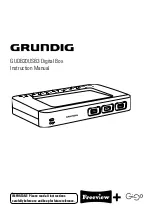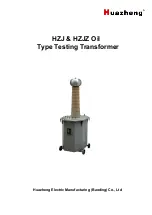
24
MDS 1710A/C and MDS 2710A/C/D
MDS 05-3447A01, Rev. F
If data buffering is
ON
, the radio operates in seamless mode. Data bytes
will be sent over the air as quickly as possible, but the receiver buffers
(stores) the data until enough bytes have arrived to cover worst-case
gaps in transmission. This mode of operation is required for protocols
such as MODBUS™ that do not allow gaps in their data transmission.
Note that seamless mode (
BUFF ON
) is intended only for applications
where the transmitter’s baud rate is greater than or equal to the
receiver’s baud rate. Adherence to this rule is left up to the user.
CKEY [ON–OFF]
The
CKEY
command enables or disables the continuously-keyed func-
tion of the radio. When
CKEY
is set to
ON
, the radio is continuously
keyed.
CTS [0–255]
The
CTS
(clear-to-send) command selects or displays the timer value
associated with the CTS line response. The command parameter ranges
from 0 to 255 milliseconds.
For DCE operation, the timer specifies how long to wait after the RTS
line goes high, before the radio asserts CTS and the DTE can transmit
the data. A CTS value of zero keys the radio and asserts the CTS line
immediately after the RTS line goes high.
For CTS Key operation (see
DEVICE
command), the timer specifies how
long to wait after asserting the CTS, before sending data out the
DATA
INTERFACE
port. A timer value of zero means that data will be sent out
the data port without imposing a key-up delay. (Other delays may be
present based on selected radio operating parameters.)
DATAKEY [ON, OFF]
The
DATAKEY
command sets or displays the ability of the radio to key the
transmitter as data is received at the
DATA INTERFACE
connector.
Asserting RTS keys the radio regardless of this command setting.
If
DATAKEY
is set to
ON
, the radio will key when a full data-character is
received at the transceiver’s
DATA INTERFACE
connector. If
DATAKEY
is
set to
OFF
, the radio needs to be keyed by asserting either the RTS or
PTT signal or with the
CKEY
or
KEY
command.
DEVICE [DCE, CTS KEY]
The
DEVICE
command sets or displays the device behavior of the radio.
The command parameter is either
DCE
or
CTS KEY
.
MDS 05-3447A01, Rev. F
MDS 1710A/C and MDS 2710A/C/D
17
5.0 TRANSCEIVER PROGRAMMING
Programming and control of the transceiver is performed through the
radio’s RJ-11
DIAG.
(Diagnostics) connector with an MDS Hand-Held
Terminal (MDS P/N 02-1501A01). This section contains a reference
chart (
Table 7
) followed by detailed descriptions for each user com-
mand.
NOTE:
In addition to HHT control, Windows-based software is avail-
able (MDS P/N 03-3156A01) to allow diagnostics and
programming using a personal computer. An installation
booklet and on-line instructions are included with the soft-
ware. Contact MDS for ordering information.
5.1 Hand-Held Terminal Connection & Startup
This section gives basic information for connecting and using the MDS
Hand-Held Terminal. For more information about the terminal, refer
also to the instructions included with each HHT kit.
The steps below assume that the HHT has been configured for use with
the transceiver (80 character screen display). If the HHT was previously
used with a different model transceiver, or if its default settings have
been changed, refer to
Section 5.2, Hand-Held Terminal Setup
for setup
details.
Follow these steps to connect the HHT:
1. Connect the HHT’s coiled cord to the
DIAG.
(
RJ-11
)
jack on the
radio as shown in
Figure 9
. This automatically places the radio into
the control and programming mode.
As an alternative, the
DATA INTERFACE
(DB-25) connector may be
used for programming instead of the
DIAG.
jack. With this arrange-
ment, Pin 23 of the HHT cable must be grounded to enable the diag-
nostic channel. (See
Table 4
.)
2. When the HHT is connected, it runs through a brief self-check,
ending with a beep. After the beep, press
to obtain the ready
“
>
” prompt.
ENTER




































